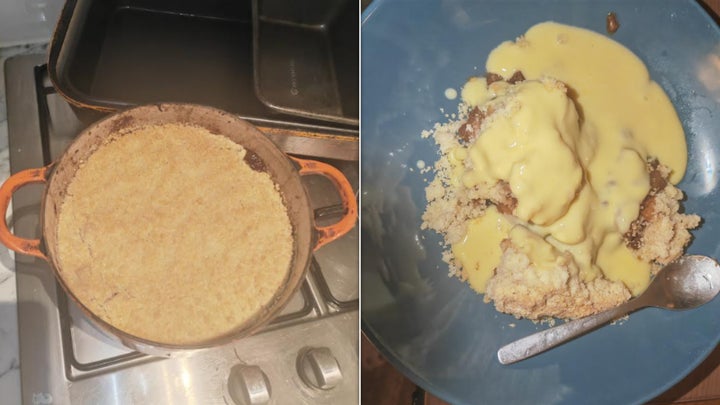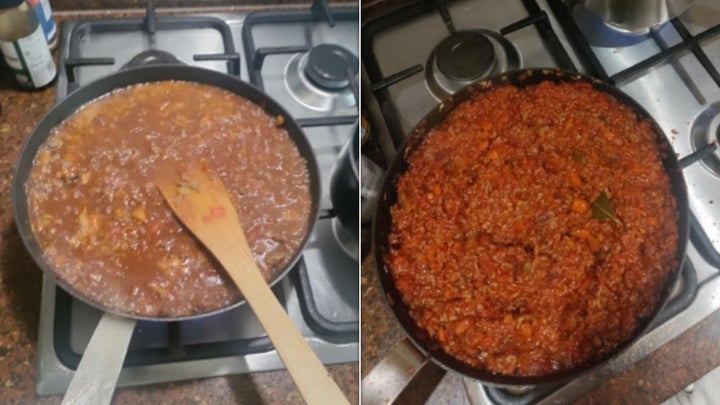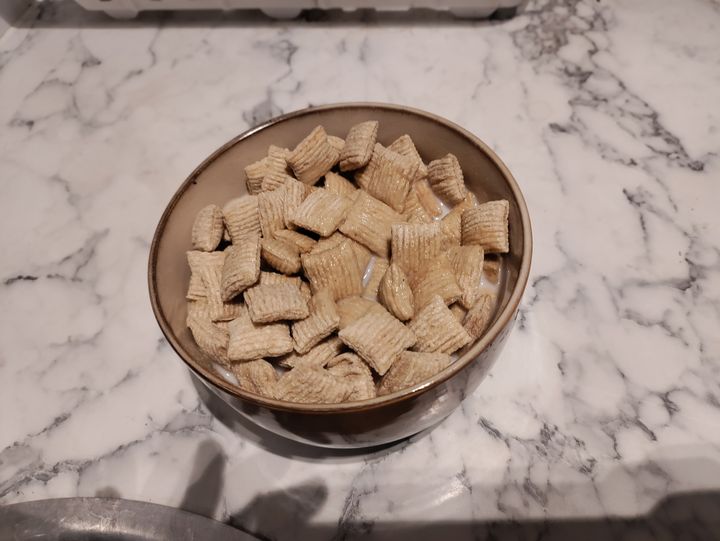<div class="js-react-hydrator" data-component-name="YouTube" data-component-id="5616" data-component-props="{"itemType":"video","index":19,"contentIndexByType":1,"contentListType":"embed","code":"
","type":"video","meta":{"author":"Senpai Kai","author_url":"https://www.youtube.com/channel/UCt80koRTG61DmNCp4oybLSg","cache_age":86400,"description":"#shorts #food #easyrecipe \n$50 OFF your FIRST order of A5 WAGYU BEEF (:\nhttps://www.crowdcow.com/l/uywukadcief\n\n————————————\n\nBusiness Inquiries: stowellkaito1@gmail.com\nInstagram: https://www.instagram.com/chino_cappucino/\nTikTok: http://tiktok.com/@senpai__kai\n\n————————————\n\nMY KITCHEN GEAR\n Pots + Pans: cookgoldilocks.com/senpaikai\n
Pots + Pans: cookgoldilocks.com/senpaikai\n Chef Tweezers: https://amzn.to/33389KU\n
Chef Tweezers: https://amzn.to/33389KU\n Chef’s knife: cookgoldilocks.com/senpaikai\n
Chef’s knife: cookgoldilocks.com/senpaikai\n Spoons + Spatulas: cookgoldilocks.com/senpaikai\n
Spoons + Spatulas: cookgoldilocks.com/senpaikai\n Cast iron pan: https://amzn.to/3t7dZpj","options":{"_cc_load_policy":{"label":"Closed captions","value":false},"_end":{"label":"End on","placeholder":"ex.: 11, 1m10s","value":""},"_start":{"label":"Start from","placeholder":"ex.: 11, 1m10s","value":""},"click_to_play":{"label":"Add your own player cover","value":false}},"provider_name":"YouTube","thumbnail_height":720,"thumbnail_url":"https://i.ytimg.com/vi/AthENEDVtjc/maxresdefault.jpg","thumbnail_width":1280,"title":"Why Restaurant Rice is Better","type":"video","url":"https://www.youtube.com/watch?v=AthENEDVtjc","version":"1.0"},"flags":[],"enhancements":{},"fullBleed":false,"options":{"theme":"life","device":"desktop","editionInfo":{"id":"uk","name":"U.K.","link":"https://www.huffingtonpost.co.uk","locale":"en_GB"},"originalEdition":"uk","isMapi":false,"isAmp":false,"isAdsFree":false,"isVideoEntry":false,"isEntry":true,"isMt":false,"entryId":"67e28b46e4b07be5218749d2","entryPermalink":"https://www.huffingtonpost.co.uk/entry/restaurant-level-rice-at-home_uk_67e28b46e4b07be5218749d2","entryTagsList":"food,recipes,rice","sectionSlug":"lifestyle","deptSlug":null,"sectionRedirectUrl":null,"subcategories":"","isWide":false,"headerOverride":null,"noVideoAds":false,"disableFloat":false,"isNative":false,"commercialVideo":{"provider":"custom","site_and_category":"uk.lifestyle","package":null},"isHighline":false,"vidibleConfigValues":{"cid":"60afc140cf94592c45d7390c","disabledWithMapiEntries":false,"overrides":{"all":"60b8e525cdd90620331baaf4"},"whitelisted":["56c5f12ee4b03a39c93c9439","56c6056ee4b01f2b7e1b5f35","59bfee7f9e451049f87f550b","5acccbaac269d609ef44c529","570278d2e4b070ff77b98217","57027b4be4b070ff77b98d5c","56fe95c4e4b0041c4242016b","570279cfe4b06d08e3629954","5ba9e8821c2e65639162ccf1","5bcd9904821576674bc55ced","5d076ca127f25f504327c72e","5b35266b158f855373e28256","5ebac2e8abddfb04f877dff2","60b8e525cdd90620331baaf4","60b64354b171b7444beaff4d","60d0d8e09340d7032ad0fb1a","60d0d90f9340d7032ad0fbeb","60d0d9949340d7032ad0fed3","60d0d9f99340d7032ad10113","60d0daa69340d7032ad104cf","60d0de02b627221e9d819408"],"playlists":{"default":"57bc306888d2ff1a7f6b5579","news":"56c6dbcee4b04edee8beb49c","politics":"56c6dbcee4b04edee8beb49c","entertainment":"56c6e7f2e4b0983aa64c60fc","tech":"56c6f70ae4b043c5bdcaebf9","parents":"56cc65c2e4b0239099455b42","lifestyle":"56cc66a9e4b01f81ef94e98c"},"playerUpdates":{"56c6056ee4b01f2b7e1b5f35":"60b8e525cdd90620331baaf4","56c5f12ee4b03a39c93c9439":"60d0d8e09340d7032ad0fb1a","59bfee7f9e451049f87f550b":"60d0d90f9340d7032ad0fbeb","5acccbaac269d609ef44c529":"60d0d9949340d7032ad0fed3","5bcd9904821576674bc55ced":"60d0d9f99340d7032ad10113","5d076ca127f25f504327c72e":"60d0daa69340d7032ad104cf","5ebac2e8abddfb04f877dff2":"60d0de02b627221e9d819408"}},"connatixConfigValues":{"defaultPlayer":"8b034f64-513c-4987-b16f-42d6008f7feb","clickToPlayPlayer":"5a777b9b-81fe-41a6-8302-59e9953ee8a2","videoPagePlayer":"19654b65-409c-4b38-90db-80cbdea02cf4"},"topConnatixThumnbailSrc":"data:image/png;base64,iVBORw0KGgoAAAANSUhEUgAAAAEAAAABCAQAAAC1HAwCAAAAC0lEQVR42mNkYAAAAAYAAjCB0C8AAAAASUVORK5CYII=","customAmpComponents":[],"ampAssetsUrl":"https://amp.assets.huffpost.com","videoTraits":null,"positionInUnitCounts":{"buzz_head":{"count":0},"buzz_body":{"count":0},"buzz_bottom":{"count":0}},"positionInSubUnitCounts":{"article_body":{"count":10},"blog_summary":{"count":0},"before_you_go_content":{"count":0}},"connatixCountsHelper":{"count":0},"buzzfeedTracking":{"context_page_id":"67e28b46e4b07be5218749d2","context_page_type":"buzz","destination":"huffpost","mode":"desktop","page_edition":"en-uk"},"tags":[{"name":"Food","slug":"food","links":{"relativeLink":"news/food","permalink":"https://www.huffingtonpost.co.uk/news/food","mobileWebLink":"https://www.huffingtonpost.co.uk/news/food"},"relegenceSubjectId":979740,"section":{"title":"Life","slug":"lifestyle"},"topic":{"title":"Food & Drink","slug":"food-drink","overridesSectionLabel":false},"url":"https://www.huffingtonpost.co.uk/news/food-drink/"},{"name":"Recipes","slug":"recipes","links":{"relativeLink":"news/recipes","permalink":"https://www.huffingtonpost.co.uk/news/recipes","mobileWebLink":"https://www.huffingtonpost.co.uk/news/recipes"},"section":{"title":"Life","slug":"lifestyle"},"topic":{"title":"Recipes","slug":"recipes","overridesSectionLabel":false},"url":"https://www.huffingtonpost.co.uk/news/recipes/"},{"name":"rice","slug":"rice","links":{"relativeLink":"news/rice","permalink":"https://www.huffingtonpost.co.uk/news/rice","mobileWebLink":"https://www.huffingtonpost.co.uk/news/rice"},"url":"https://www.huffingtonpost.co.uk/news/rice/"}],"isLiveblogLive":null,"isLiveblog":false,"cetUnit":"buzz_body","bodyAds":["
Cast iron pan: https://amzn.to/3t7dZpj","options":{"_cc_load_policy":{"label":"Closed captions","value":false},"_end":{"label":"End on","placeholder":"ex.: 11, 1m10s","value":""},"_start":{"label":"Start from","placeholder":"ex.: 11, 1m10s","value":""},"click_to_play":{"label":"Add your own player cover","value":false}},"provider_name":"YouTube","thumbnail_height":720,"thumbnail_url":"https://i.ytimg.com/vi/AthENEDVtjc/maxresdefault.jpg","thumbnail_width":1280,"title":"Why Restaurant Rice is Better","type":"video","url":"https://www.youtube.com/watch?v=AthENEDVtjc","version":"1.0"},"flags":[],"enhancements":{},"fullBleed":false,"options":{"theme":"life","device":"desktop","editionInfo":{"id":"uk","name":"U.K.","link":"https://www.huffingtonpost.co.uk","locale":"en_GB"},"originalEdition":"uk","isMapi":false,"isAmp":false,"isAdsFree":false,"isVideoEntry":false,"isEntry":true,"isMt":false,"entryId":"67e28b46e4b07be5218749d2","entryPermalink":"https://www.huffingtonpost.co.uk/entry/restaurant-level-rice-at-home_uk_67e28b46e4b07be5218749d2","entryTagsList":"food,recipes,rice","sectionSlug":"lifestyle","deptSlug":null,"sectionRedirectUrl":null,"subcategories":"","isWide":false,"headerOverride":null,"noVideoAds":false,"disableFloat":false,"isNative":false,"commercialVideo":{"provider":"custom","site_and_category":"uk.lifestyle","package":null},"isHighline":false,"vidibleConfigValues":{"cid":"60afc140cf94592c45d7390c","disabledWithMapiEntries":false,"overrides":{"all":"60b8e525cdd90620331baaf4"},"whitelisted":["56c5f12ee4b03a39c93c9439","56c6056ee4b01f2b7e1b5f35","59bfee7f9e451049f87f550b","5acccbaac269d609ef44c529","570278d2e4b070ff77b98217","57027b4be4b070ff77b98d5c","56fe95c4e4b0041c4242016b","570279cfe4b06d08e3629954","5ba9e8821c2e65639162ccf1","5bcd9904821576674bc55ced","5d076ca127f25f504327c72e","5b35266b158f855373e28256","5ebac2e8abddfb04f877dff2","60b8e525cdd90620331baaf4","60b64354b171b7444beaff4d","60d0d8e09340d7032ad0fb1a","60d0d90f9340d7032ad0fbeb","60d0d9949340d7032ad0fed3","60d0d9f99340d7032ad10113","60d0daa69340d7032ad104cf","60d0de02b627221e9d819408"],"playlists":{"default":"57bc306888d2ff1a7f6b5579","news":"56c6dbcee4b04edee8beb49c","politics":"56c6dbcee4b04edee8beb49c","entertainment":"56c6e7f2e4b0983aa64c60fc","tech":"56c6f70ae4b043c5bdcaebf9","parents":"56cc65c2e4b0239099455b42","lifestyle":"56cc66a9e4b01f81ef94e98c"},"playerUpdates":{"56c6056ee4b01f2b7e1b5f35":"60b8e525cdd90620331baaf4","56c5f12ee4b03a39c93c9439":"60d0d8e09340d7032ad0fb1a","59bfee7f9e451049f87f550b":"60d0d90f9340d7032ad0fbeb","5acccbaac269d609ef44c529":"60d0d9949340d7032ad0fed3","5bcd9904821576674bc55ced":"60d0d9f99340d7032ad10113","5d076ca127f25f504327c72e":"60d0daa69340d7032ad104cf","5ebac2e8abddfb04f877dff2":"60d0de02b627221e9d819408"}},"connatixConfigValues":{"defaultPlayer":"8b034f64-513c-4987-b16f-42d6008f7feb","clickToPlayPlayer":"5a777b9b-81fe-41a6-8302-59e9953ee8a2","videoPagePlayer":"19654b65-409c-4b38-90db-80cbdea02cf4"},"topConnatixThumnbailSrc":"data:image/png;base64,iVBORw0KGgoAAAANSUhEUgAAAAEAAAABCAQAAAC1HAwCAAAAC0lEQVR42mNkYAAAAAYAAjCB0C8AAAAASUVORK5CYII=","customAmpComponents":[],"ampAssetsUrl":"https://amp.assets.huffpost.com","videoTraits":null,"positionInUnitCounts":{"buzz_head":{"count":0},"buzz_body":{"count":0},"buzz_bottom":{"count":0}},"positionInSubUnitCounts":{"article_body":{"count":10},"blog_summary":{"count":0},"before_you_go_content":{"count":0}},"connatixCountsHelper":{"count":0},"buzzfeedTracking":{"context_page_id":"67e28b46e4b07be5218749d2","context_page_type":"buzz","destination":"huffpost","mode":"desktop","page_edition":"en-uk"},"tags":[{"name":"Food","slug":"food","links":{"relativeLink":"news/food","permalink":"https://www.huffingtonpost.co.uk/news/food","mobileWebLink":"https://www.huffingtonpost.co.uk/news/food"},"relegenceSubjectId":979740,"section":{"title":"Life","slug":"lifestyle"},"topic":{"title":"Food & Drink","slug":"food-drink","overridesSectionLabel":false},"url":"https://www.huffingtonpost.co.uk/news/food-drink/"},{"name":"Recipes","slug":"recipes","links":{"relativeLink":"news/recipes","permalink":"https://www.huffingtonpost.co.uk/news/recipes","mobileWebLink":"https://www.huffingtonpost.co.uk/news/recipes"},"section":{"title":"Life","slug":"lifestyle"},"topic":{"title":"Recipes","slug":"recipes","overridesSectionLabel":false},"url":"https://www.huffingtonpost.co.uk/news/recipes/"},{"name":"rice","slug":"rice","links":{"relativeLink":"news/rice","permalink":"https://www.huffingtonpost.co.uk/news/rice","mobileWebLink":"https://www.huffingtonpost.co.uk/news/rice"},"url":"https://www.huffingtonpost.co.uk/news/rice/"}],"isLiveblogLive":null,"isLiveblog":false,"cetUnit":"buzz_body","bodyAds":["
\r\n\r\n HPGam.cmd.push(function(){\r\n\t\treturn HPGam.render(\"inline-1\", \"entry_paragraph_1\", false, false);\r\n });\r\n\r\n","
\r\n\r\n HPGam.cmd.push(function(){\r\n\t\treturn HPGam.render(\"inline\", \"entry_paragraph_2\", false, false);\r\n });\r\n\r\n","
\r\n\r\n HPGam.cmd.push(function(){\r\n\t\treturn HPGam.render(\"inline-2\", \"entry_paragraph_3\", false, false);\r\n });\r\n\r\n","
\r\n\r\n HPGam.cmd.push(function(){\r\n\t\treturn HPGam.render(\"inline-infinite\", \"repeating_dynamic_display\", false, false);\r\n });\r\n\r\n"],"adCount":0},"isCollectionEmbed":false}”>





 Pots + Pans: cookgoldilocks.com/senpaikai\n
Pots + Pans: cookgoldilocks.com/senpaikai\n Chef Tweezers: https://amzn.to/33389KU\n
Chef Tweezers: https://amzn.to/33389KU\n Chef’s knife: cookgoldilocks.com/senpaikai\n
Chef’s knife: cookgoldilocks.com/senpaikai\n Spoons + Spatulas: cookgoldilocks.com/senpaikai\n
Spoons + Spatulas: cookgoldilocks.com/senpaikai\n Cast iron pan: https://amzn.to/3t7dZpj","options":{"_cc_load_policy":{"label":"Closed captions","value":false},"_end":{"label":"End on","placeholder":"ex.: 11, 1m10s","value":""},"_start":{"label":"Start from","placeholder":"ex.: 11, 1m10s","value":""},"click_to_play":{"label":"Add your own player cover","value":false}},"provider_name":"YouTube","thumbnail_height":720,"thumbnail_url":"https://i.ytimg.com/vi/AthENEDVtjc/maxresdefault.jpg","thumbnail_width":1280,"title":"Why Restaurant Rice is Better","type":"video","url":"https://www.youtube.com/watch?v=AthENEDVtjc","version":"1.0"},"flags":[],"enhancements":{},"fullBleed":false,"options":{"theme":"life","device":"desktop","editionInfo":{"id":"uk","name":"U.K.","link":"https://www.huffingtonpost.co.uk","locale":"en_GB"},"originalEdition":"uk","isMapi":false,"isAmp":false,"isAdsFree":false,"isVideoEntry":false,"isEntry":true,"isMt":false,"entryId":"67e28b46e4b07be5218749d2","entryPermalink":"https://www.huffingtonpost.co.uk/entry/restaurant-level-rice-at-home_uk_67e28b46e4b07be5218749d2","entryTagsList":"food,recipes,rice","sectionSlug":"lifestyle","deptSlug":null,"sectionRedirectUrl":null,"subcategories":"","isWide":false,"headerOverride":null,"noVideoAds":false,"disableFloat":false,"isNative":false,"commercialVideo":{"provider":"custom","site_and_category":"uk.lifestyle","package":null},"isHighline":false,"vidibleConfigValues":{"cid":"60afc140cf94592c45d7390c","disabledWithMapiEntries":false,"overrides":{"all":"60b8e525cdd90620331baaf4"},"whitelisted":["56c5f12ee4b03a39c93c9439","56c6056ee4b01f2b7e1b5f35","59bfee7f9e451049f87f550b","5acccbaac269d609ef44c529","570278d2e4b070ff77b98217","57027b4be4b070ff77b98d5c","56fe95c4e4b0041c4242016b","570279cfe4b06d08e3629954","5ba9e8821c2e65639162ccf1","5bcd9904821576674bc55ced","5d076ca127f25f504327c72e","5b35266b158f855373e28256","5ebac2e8abddfb04f877dff2","60b8e525cdd90620331baaf4","60b64354b171b7444beaff4d","60d0d8e09340d7032ad0fb1a","60d0d90f9340d7032ad0fbeb","60d0d9949340d7032ad0fed3","60d0d9f99340d7032ad10113","60d0daa69340d7032ad104cf","60d0de02b627221e9d819408"],"playlists":{"default":"57bc306888d2ff1a7f6b5579","news":"56c6dbcee4b04edee8beb49c","politics":"56c6dbcee4b04edee8beb49c","entertainment":"56c6e7f2e4b0983aa64c60fc","tech":"56c6f70ae4b043c5bdcaebf9","parents":"56cc65c2e4b0239099455b42","lifestyle":"56cc66a9e4b01f81ef94e98c"},"playerUpdates":{"56c6056ee4b01f2b7e1b5f35":"60b8e525cdd90620331baaf4","56c5f12ee4b03a39c93c9439":"60d0d8e09340d7032ad0fb1a","59bfee7f9e451049f87f550b":"60d0d90f9340d7032ad0fbeb","5acccbaac269d609ef44c529":"60d0d9949340d7032ad0fed3","5bcd9904821576674bc55ced":"60d0d9f99340d7032ad10113","5d076ca127f25f504327c72e":"60d0daa69340d7032ad104cf","5ebac2e8abddfb04f877dff2":"60d0de02b627221e9d819408"}},"connatixConfigValues":{"defaultPlayer":"8b034f64-513c-4987-b16f-42d6008f7feb","clickToPlayPlayer":"5a777b9b-81fe-41a6-8302-59e9953ee8a2","videoPagePlayer":"19654b65-409c-4b38-90db-80cbdea02cf4"},"topConnatixThumnbailSrc":"data:image/png;base64,iVBORw0KGgoAAAANSUhEUgAAAAEAAAABCAQAAAC1HAwCAAAAC0lEQVR42mNkYAAAAAYAAjCB0C8AAAAASUVORK5CYII=","customAmpComponents":[],"ampAssetsUrl":"https://amp.assets.huffpost.com","videoTraits":null,"positionInUnitCounts":{"buzz_head":{"count":0},"buzz_body":{"count":0},"buzz_bottom":{"count":0}},"positionInSubUnitCounts":{"article_body":{"count":10},"blog_summary":{"count":0},"before_you_go_content":{"count":0}},"connatixCountsHelper":{"count":0},"buzzfeedTracking":{"context_page_id":"67e28b46e4b07be5218749d2","context_page_type":"buzz","destination":"huffpost","mode":"desktop","page_edition":"en-uk"},"tags":[{"name":"Food","slug":"food","links":{"relativeLink":"news/food","permalink":"https://www.huffingtonpost.co.uk/news/food","mobileWebLink":"https://www.huffingtonpost.co.uk/news/food"},"relegenceSubjectId":979740,"section":{"title":"Life","slug":"lifestyle"},"topic":{"title":"Food & Drink","slug":"food-drink","overridesSectionLabel":false},"url":"https://www.huffingtonpost.co.uk/news/food-drink/"},{"name":"Recipes","slug":"recipes","links":{"relativeLink":"news/recipes","permalink":"https://www.huffingtonpost.co.uk/news/recipes","mobileWebLink":"https://www.huffingtonpost.co.uk/news/recipes"},"section":{"title":"Life","slug":"lifestyle"},"topic":{"title":"Recipes","slug":"recipes","overridesSectionLabel":false},"url":"https://www.huffingtonpost.co.uk/news/recipes/"},{"name":"rice","slug":"rice","links":{"relativeLink":"news/rice","permalink":"https://www.huffingtonpost.co.uk/news/rice","mobileWebLink":"https://www.huffingtonpost.co.uk/news/rice"},"url":"https://www.huffingtonpost.co.uk/news/rice/"}],"isLiveblogLive":null,"isLiveblog":false,"cetUnit":"buzz_body","bodyAds":["
Cast iron pan: https://amzn.to/3t7dZpj","options":{"_cc_load_policy":{"label":"Closed captions","value":false},"_end":{"label":"End on","placeholder":"ex.: 11, 1m10s","value":""},"_start":{"label":"Start from","placeholder":"ex.: 11, 1m10s","value":""},"click_to_play":{"label":"Add your own player cover","value":false}},"provider_name":"YouTube","thumbnail_height":720,"thumbnail_url":"https://i.ytimg.com/vi/AthENEDVtjc/maxresdefault.jpg","thumbnail_width":1280,"title":"Why Restaurant Rice is Better","type":"video","url":"https://www.youtube.com/watch?v=AthENEDVtjc","version":"1.0"},"flags":[],"enhancements":{},"fullBleed":false,"options":{"theme":"life","device":"desktop","editionInfo":{"id":"uk","name":"U.K.","link":"https://www.huffingtonpost.co.uk","locale":"en_GB"},"originalEdition":"uk","isMapi":false,"isAmp":false,"isAdsFree":false,"isVideoEntry":false,"isEntry":true,"isMt":false,"entryId":"67e28b46e4b07be5218749d2","entryPermalink":"https://www.huffingtonpost.co.uk/entry/restaurant-level-rice-at-home_uk_67e28b46e4b07be5218749d2","entryTagsList":"food,recipes,rice","sectionSlug":"lifestyle","deptSlug":null,"sectionRedirectUrl":null,"subcategories":"","isWide":false,"headerOverride":null,"noVideoAds":false,"disableFloat":false,"isNative":false,"commercialVideo":{"provider":"custom","site_and_category":"uk.lifestyle","package":null},"isHighline":false,"vidibleConfigValues":{"cid":"60afc140cf94592c45d7390c","disabledWithMapiEntries":false,"overrides":{"all":"60b8e525cdd90620331baaf4"},"whitelisted":["56c5f12ee4b03a39c93c9439","56c6056ee4b01f2b7e1b5f35","59bfee7f9e451049f87f550b","5acccbaac269d609ef44c529","570278d2e4b070ff77b98217","57027b4be4b070ff77b98d5c","56fe95c4e4b0041c4242016b","570279cfe4b06d08e3629954","5ba9e8821c2e65639162ccf1","5bcd9904821576674bc55ced","5d076ca127f25f504327c72e","5b35266b158f855373e28256","5ebac2e8abddfb04f877dff2","60b8e525cdd90620331baaf4","60b64354b171b7444beaff4d","60d0d8e09340d7032ad0fb1a","60d0d90f9340d7032ad0fbeb","60d0d9949340d7032ad0fed3","60d0d9f99340d7032ad10113","60d0daa69340d7032ad104cf","60d0de02b627221e9d819408"],"playlists":{"default":"57bc306888d2ff1a7f6b5579","news":"56c6dbcee4b04edee8beb49c","politics":"56c6dbcee4b04edee8beb49c","entertainment":"56c6e7f2e4b0983aa64c60fc","tech":"56c6f70ae4b043c5bdcaebf9","parents":"56cc65c2e4b0239099455b42","lifestyle":"56cc66a9e4b01f81ef94e98c"},"playerUpdates":{"56c6056ee4b01f2b7e1b5f35":"60b8e525cdd90620331baaf4","56c5f12ee4b03a39c93c9439":"60d0d8e09340d7032ad0fb1a","59bfee7f9e451049f87f550b":"60d0d90f9340d7032ad0fbeb","5acccbaac269d609ef44c529":"60d0d9949340d7032ad0fed3","5bcd9904821576674bc55ced":"60d0d9f99340d7032ad10113","5d076ca127f25f504327c72e":"60d0daa69340d7032ad104cf","5ebac2e8abddfb04f877dff2":"60d0de02b627221e9d819408"}},"connatixConfigValues":{"defaultPlayer":"8b034f64-513c-4987-b16f-42d6008f7feb","clickToPlayPlayer":"5a777b9b-81fe-41a6-8302-59e9953ee8a2","videoPagePlayer":"19654b65-409c-4b38-90db-80cbdea02cf4"},"topConnatixThumnbailSrc":"data:image/png;base64,iVBORw0KGgoAAAANSUhEUgAAAAEAAAABCAQAAAC1HAwCAAAAC0lEQVR42mNkYAAAAAYAAjCB0C8AAAAASUVORK5CYII=","customAmpComponents":[],"ampAssetsUrl":"https://amp.assets.huffpost.com","videoTraits":null,"positionInUnitCounts":{"buzz_head":{"count":0},"buzz_body":{"count":0},"buzz_bottom":{"count":0}},"positionInSubUnitCounts":{"article_body":{"count":10},"blog_summary":{"count":0},"before_you_go_content":{"count":0}},"connatixCountsHelper":{"count":0},"buzzfeedTracking":{"context_page_id":"67e28b46e4b07be5218749d2","context_page_type":"buzz","destination":"huffpost","mode":"desktop","page_edition":"en-uk"},"tags":[{"name":"Food","slug":"food","links":{"relativeLink":"news/food","permalink":"https://www.huffingtonpost.co.uk/news/food","mobileWebLink":"https://www.huffingtonpost.co.uk/news/food"},"relegenceSubjectId":979740,"section":{"title":"Life","slug":"lifestyle"},"topic":{"title":"Food & Drink","slug":"food-drink","overridesSectionLabel":false},"url":"https://www.huffingtonpost.co.uk/news/food-drink/"},{"name":"Recipes","slug":"recipes","links":{"relativeLink":"news/recipes","permalink":"https://www.huffingtonpost.co.uk/news/recipes","mobileWebLink":"https://www.huffingtonpost.co.uk/news/recipes"},"section":{"title":"Life","slug":"lifestyle"},"topic":{"title":"Recipes","slug":"recipes","overridesSectionLabel":false},"url":"https://www.huffingtonpost.co.uk/news/recipes/"},{"name":"rice","slug":"rice","links":{"relativeLink":"news/rice","permalink":"https://www.huffingtonpost.co.uk/news/rice","mobileWebLink":"https://www.huffingtonpost.co.uk/news/rice"},"url":"https://www.huffingtonpost.co.uk/news/rice/"}],"isLiveblogLive":null,"isLiveblog":false,"cetUnit":"buzz_body","bodyAds":["



































